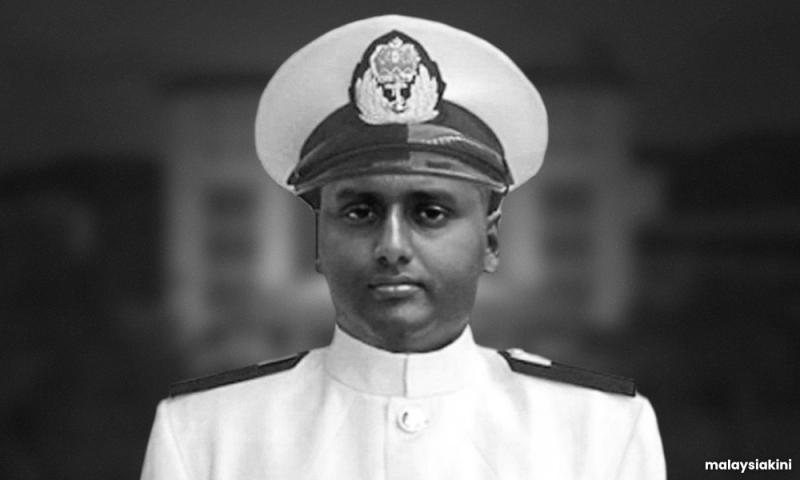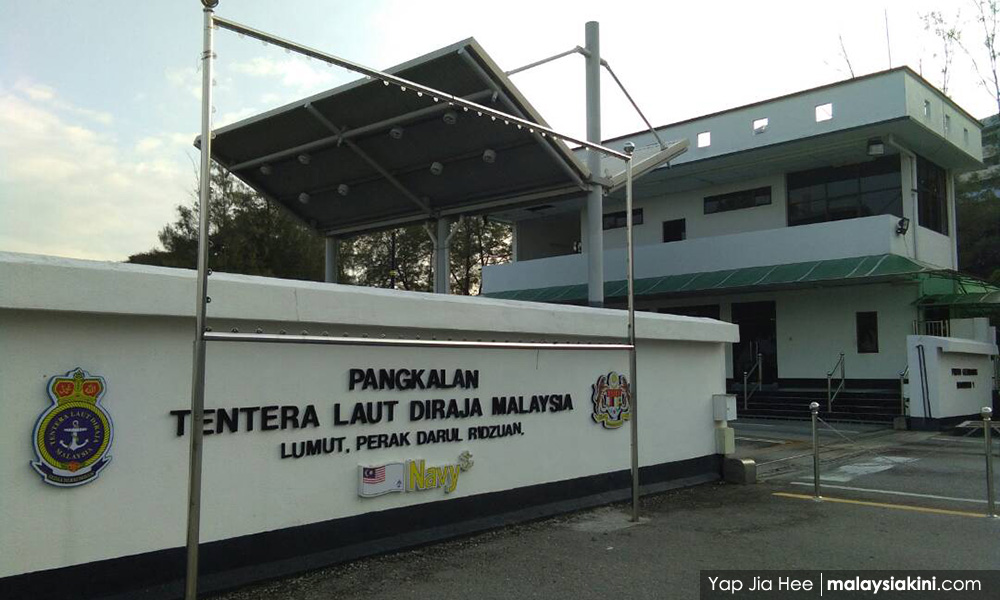
Mariam Mokhtar
Published: Sep 6, 2024 6:45 PM
COMMENT | Two young adults who wanted to forge their careers in the military became the tragic casualties of a system riddled with negligence and apathy.
In 2017, the National Defence University cadet, 20-year-old Zulfarhan Osman Zulkarnain was targeted and tortured to death by his peers over a laptop, and in that fortnight, neither his lecturers nor wardens noticed his absence from lectures and roll call.
A year later, 27-year-old J Soosaimanickkam, was victimised allegedly because of his race. His alleged torturers were the officers in his Royal Malaysia Navy training unit.
Why didn’t the others in positions of authority act, to halt the harassment? Their deaths exposed the shocking culture of bullying in our military institutions.
More importantly, the ensuing probes into their deaths, revealed the bumbling incompetence, lackadaisical approach and shocking lack of professionalism of key public figures.
Failures were recorded on several fronts. The medical staff. The post-mortem. Misleading police reports. Bullies masquerading as trainers. Senior officers who looked away. The “work-challenged” coroner.
How able and competent are the employees in the armed forces hospital?
Death from heatstroke
The Perak Emergency Department head, Dr Nik Mohd Noor Nik Amin, expressed “confidence” that Soosaimanicckman (above) had died from heatstroke.
Being “confident” is merely an opinion. It is not fact.
Nik based his findings on his 20 years at the armed forces hospital in Lumut.
Published: Sep 6, 2024 6:45 PM
COMMENT | Two young adults who wanted to forge their careers in the military became the tragic casualties of a system riddled with negligence and apathy.
In 2017, the National Defence University cadet, 20-year-old Zulfarhan Osman Zulkarnain was targeted and tortured to death by his peers over a laptop, and in that fortnight, neither his lecturers nor wardens noticed his absence from lectures and roll call.
A year later, 27-year-old J Soosaimanickkam, was victimised allegedly because of his race. His alleged torturers were the officers in his Royal Malaysia Navy training unit.
Why didn’t the others in positions of authority act, to halt the harassment? Their deaths exposed the shocking culture of bullying in our military institutions.
More importantly, the ensuing probes into their deaths, revealed the bumbling incompetence, lackadaisical approach and shocking lack of professionalism of key public figures.
Failures were recorded on several fronts. The medical staff. The post-mortem. Misleading police reports. Bullies masquerading as trainers. Senior officers who looked away. The “work-challenged” coroner.
How able and competent are the employees in the armed forces hospital?
Death from heatstroke
The Perak Emergency Department head, Dr Nik Mohd Noor Nik Amin, expressed “confidence” that Soosaimanicckman (above) had died from heatstroke.
Being “confident” is merely an opinion. It is not fact.
Nik based his findings on his 20 years at the armed forces hospital in Lumut.

The late cadet Zulfarhan Osman Zulkarnain
He said, “Furthermore, the blood tests of the deceased indicated heatstroke, and the symptoms the victim experienced lasted a short period of three to four days.
“Based on these facts, I am confident that the victim’s death was due to heatstroke.”
Nik is being disingenuous.
In March 2023, forensic pathologist associate professor Dr Bhupinder Singh testified at the inquest and criticised the post-mortem conducted on Soosaimanicckam.
Bhupinder, 71, was the former head of the Penang Hospital Forensic Department before he joined the Royal College of Surgeons in Ireland & University College Dublin Malaysia Campus (RUMC).
He said that the autopsy of deaths at a government training facility should have been conducted by an expert pathologist.
Soosaimanicckam’s post-mortem was left to a junior medical officer (MO) who lacked training. Tests were incomplete. The diagnosis was flawed.
He said, “Furthermore, the blood tests of the deceased indicated heatstroke, and the symptoms the victim experienced lasted a short period of three to four days.
“Based on these facts, I am confident that the victim’s death was due to heatstroke.”
Nik is being disingenuous.
In March 2023, forensic pathologist associate professor Dr Bhupinder Singh testified at the inquest and criticised the post-mortem conducted on Soosaimanicckam.
Bhupinder, 71, was the former head of the Penang Hospital Forensic Department before he joined the Royal College of Surgeons in Ireland & University College Dublin Malaysia Campus (RUMC).
He said that the autopsy of deaths at a government training facility should have been conducted by an expert pathologist.
Soosaimanicckam’s post-mortem was left to a junior medical officer (MO) who lacked training. Tests were incomplete. The diagnosis was flawed.

Bhupinder also disagreed with Nik’s analysis that the deceased had heatstroke. Medical reports had also shown that the temperature of the deceased had not been taken during the resuscitation process.
Another question raised by Bhupinder was the failure of the MO to prepare blood and urine samples, including samples of the liver, kidneys, adrenals and spleen for histopathology testing, which he said were critical for providing an accurate diagnosis.
So what blood test was the navy doctor, Nik, referring to, when he said Soosaimanicckam had died from heatstroke?
Bacterial infection
The MO’s oral testimony that a bacterial infection had caused fluid in the lungs, which subsequently caused respiratory failure and eventual death was also torn apart by Bhupinder.
The MO had failed to include that piece of information in the post-mortem report, besides failing to examine the source of the bacterial infection.
Bhupinder said records of the deceased experiencing breathing difficulties, muscle aches, and renal failure, all point towards leptospirosis, possibly from exposure to contaminated water, contracted at the start of his training.
His analysis of the post-mortem report was that the cause of death was multi-organ failure, with blood clots forming throughout the body.
He criticised the navy’s failure to have Soosaimanicckam admitted, as this had caused the sharp deterioration of his health, unlike other trainees with leptospirosis, who had been swiftly hospitalised and had subsequently recovered.
The examinations and testing may have been inadequate, but worse was the failure of the medical assistant at the armed forces hospital to appreciate the importance of making accurate police reports.
Mohd Fazil Mansor lodged a police report to say that he had received Soosaimanicckam’s body when in fact, he did not.
If this employee was ignorant of the rules, how many previous police reports are inaccurate?
Systemic bullying
While our attention is focused on the incompetence of the medical staff, we also find that the bullying nature of the trainers has been quietly ignored.

Soosaimanickam’s family submitting a memorandum to Bukit Aman calling for a transparent investigation into his death.
A number of the cadet’s peers had witnessed and testified that Soosaimanicckam had been bullied, and physically and mentally abused by the officers who were supposed to train him. One senior officer sat on his abdomen and repeatedly slapped his face.
When questioned, the trainers would claim that Soosaimanicckam was not being punished. In their eyes, they were merely motivating him.
However, what was their reason(s) for refusing his request to see a doctor, not just once, but on many occasions?
Last July, the Ipoh High Court ruled that Soosaimanicckam’s death was murder and overturned the 2023 Coroner’s Court open verdict.
Justice Abdul Wahab Mohamed ruled that the cadet’s death was a direct consequence of the training officers denying him medical treatment.
He also said, “With the greatest of respect, the learned coroner took the easy way out (by) coming to an open verdict without considering the evidence before her.”
How deeply embedded is the culture of bullying in our military institutions?
What is the Defence Ministry’s anti-bullying policy?
How will the Madani administration tackle the apathy, incompetence, lackadaisical attitude and lack of professionalism in our public institutions?
A number of the cadet’s peers had witnessed and testified that Soosaimanicckam had been bullied, and physically and mentally abused by the officers who were supposed to train him. One senior officer sat on his abdomen and repeatedly slapped his face.
When questioned, the trainers would claim that Soosaimanicckam was not being punished. In their eyes, they were merely motivating him.
However, what was their reason(s) for refusing his request to see a doctor, not just once, but on many occasions?
Last July, the Ipoh High Court ruled that Soosaimanicckam’s death was murder and overturned the 2023 Coroner’s Court open verdict.
Justice Abdul Wahab Mohamed ruled that the cadet’s death was a direct consequence of the training officers denying him medical treatment.
He also said, “With the greatest of respect, the learned coroner took the easy way out (by) coming to an open verdict without considering the evidence before her.”
How deeply embedded is the culture of bullying in our military institutions?
What is the Defence Ministry’s anti-bullying policy?
How will the Madani administration tackle the apathy, incompetence, lackadaisical attitude and lack of professionalism in our public institutions?
MARIAM MOKHTAR is a defender of the truth, the admiral-general of the Green Bean Army, and the president of the Perak Liberation Organisation (PLO). Blog, X.

One has no background.
ReplyDeleteThe other is of the wrong race & faith.
Even though both share the same love to serve a country they love & yet full of leaching weaklings!